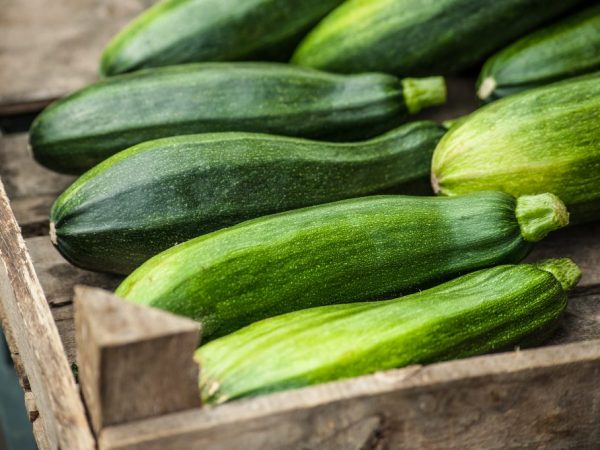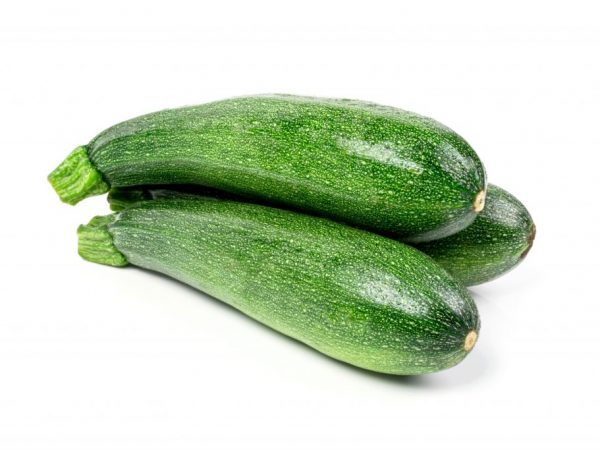Ways to store zucchini at home
Zucchini usually produce rich yields. I want to save vegetables for the winter, because they are rich in vitamins and minerals. You can make pickles from them and lose some of the valuable substances, or you can make fresh stocks. If you ensure the correct storage of zucchini, they will delight with their taste in winter and spring.

Ways to store zucchini at home
Winter storage varieties
Not all zucchini varieties are suitable for fresh winter storage. The following varieties retain their appearance and taste well:
- varieties Gribovsky, Festival, Golden Cup - they have a dense peel and a small number of seeds, they lie up to 5 months;
- An aeronaut with dark green tight fruits is stored for about 4-4.5 months;
- Arlika, Yellow-fruited, Assete retain their properties for 3-4 months;
- blackish-green fruits of the Negritenok variety can lie no more than 2 months.
You can also harvest zucchini of the varieties Zolotinka, Tsyganenok, Zebra, Bumblebee, Skvorushka for the winter.
Training
The skin of long-term zucchini should be thick and firm to protect the fruit from rotting. There should be no damage on the surface of the peel. Scratched zucchini are best eaten immediately after harvest.
You need to collect vegetables from the garden together with the stalk, cut off by 6-9 cm. It protects from putrefactive processes and drying out of the pulp. The quality of the fetus is determined by the condition of the leg. If it is firm, the zucchini can still be stored. Fruits with soft legs will not last long, they must be eaten immediately.
Fruit selected for stocks must not be washed. They are wiped off the ground with a dry cloth, dried from moisture. The fruits are stacked vertically in a regular wooden box, legs up, in one or more layers. In the intervals between the rows, clean sheets of cardboard are laid.
Home storage
With the right preparation and selection of the room, the zucchini will be stored for the entire period allotted for the variety without loss of appearance and taste characteristics. The room for this must be dark so that seeds do not start to germinate. It is also important to provide good ventilation to avoid rotting.
At room temperature
The optimum temperature for keeping fresh zucchini is 10 ° C. At a room temperature of 20-25 ° C in a city apartment, the fruits will last no longer than 30-40 days. Zucchini are good at home.
To store fruits, you need to choose dark places in the apartment:
- under furniture;
- in the storage room;
- near the balcony door behind a thick curtain.
You cannot put crops on the balcony. If the temperature is unstable, the pulp will ferment, and rotting will begin.
In the fridge

Vegetables can be stored in the refrigerator for a month and a half.
In the boxes for fruits and vegetables at the bottom of the refrigerating chamber, the temperature is kept at 5 ° C. The indicator is suitable for storing zucchini, but high humidity reduces the period to 1-1.5 months.
To keep vegetables in the refrigerator longer, they are wrapped in paper.Several holes are made in the wrapper for free air access.
Washed, peeled and cut zucchini are stored in the refrigerator for no longer than 3-4 days. They are packed in polyethylene.
In the freezer
For storage in the freezer, vegetables must be specially prepared:
- wash well under warm running water;
- cut into rings or cubes (it is better not to freeze the whole fruit);
- put in a special container.
It is advised to store vegetables in this way in special containers made of food grade plastic (polypropylene). A snowflake should be drawn on the bottom of the container or a minus temperature should be indicated. Such plastic will not emit harmful substances when exposed to the external environment and will not degrade the quality of products.
In the freezer, the nutritional value of the fruits is not lost, but their external properties change. After defrosting, the vegetables will become soft, suitable only for frying or stewing.
In the cellar
Zucchini, zucchini and squash can be stored in the basement of the house or cellar, if there is good ventilation. If they are placed on racks, the fruits are placed on straw at a distance from each other. They can also be wrapped in dry natural fabric.
You can also keep vegetables in the cellar in boxes made of wooden boards or cardboard boxes. Cloth or cardboard is laid between the rows to protect from a drop in temperature or the penetration of sunlight.
It will be possible to save zucchini until spring if there are no rats, mice, and mold in the room.
Storage periods
The storage time for zucchini at room temperature, in the refrigerator, freezer or cellar depends on the variety. Subject to the rules of collection and selection of suitable conditions, vegetables will lie 4-5 months from the date of harvest. Zucchini has the longest shelf life - from summer to mid-spring.
You need to check the quality of the fruit every 10-14 days according to the condition of the stalk. Also, vegetables need to be turned over and swapped to avoid crushing and ensure longer storage.
Using spoiled zucchini
When checking the quality of fruits in the total mass, it is necessary to extract the spoiled ones so as not to lose the entire crop. If the stalk turned black and dried out, rotting began. Further actions depend on the scale - completely rotten specimens are thrown away. If the stalks turn yellow, become soft, vegetables will soon begin to deteriorate.
If this happens in one place, the site is cut off, and the zucchini is prepared in any way. Soft vegetables are good for stews or caviar. Fruits that have retained their density can be fried, added to soup.
The box in which the rotten vegetables were found is emptied, washed, dried. The fruits are ventilated, the cardboard in the partitions is changed, sprinkled with grated chalk.
If you follow the rules for removing zucchini from the garden along with the leg and check them well for damage to the peel, they will not rot. The fruits will remain fresh throughout the winter.

